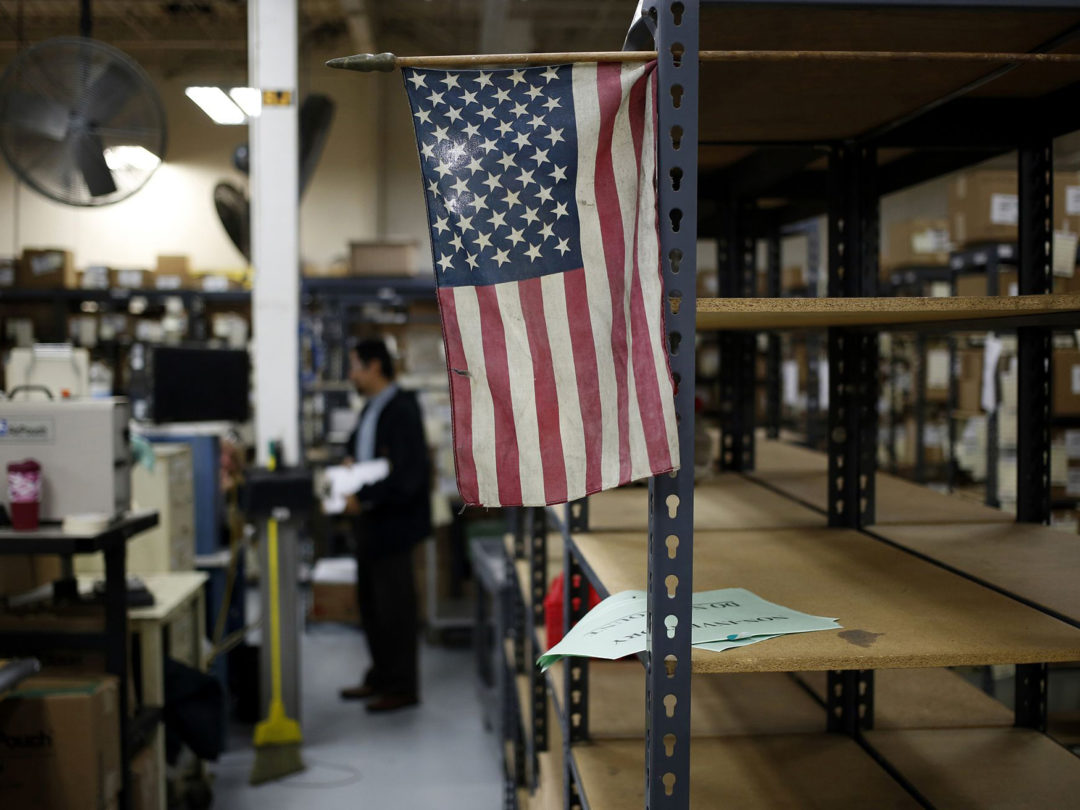
Visit Our Sponsors |
|
|
|
|
|
|
|
|
|
|
|
|
|
|
|
|
|
|
|
|
|
|
|
|
|
|
|
|
|
|
|
|
|
|
|
|
|
|

A U.S. flag is displayed on a factory floor in Bowling Green, Kentucky. Photo: Bloomberg.
U.S. manufacturing expanded in March at the fastest pace since 1983, catapulted by the firmest orders and production readings in 17 years. The data add to evidence of an economy poised to accelerate.
A gauge of factory activity jumped to 64.7 from 60.8 a month earlier, according to Institute for Supply Management data released Thursday. Index levels above 50 indicate expansion and the March figure topped all but one estimate in a Bloomberg survey of economists.
Stronger growth in new orders and output highlight accelerating household and business demand as increased vaccinations, fewer pandemic-related restrictions and fiscal relief provide a clearer path for the economic recovery.
“The manufacturing economy continued its recovery in March,” Timothy Fiore, chair of ISM’s Manufacturing Business Survey Committee, said in a statement. At the same time, purchasing managers “reported that their companies and suppliers continue to struggle to meet increasing rates of demand due to coronavirus impacts limiting availability of parts and materials.”
All but one of 18 ISM manufacturing industries reported growth in March, led by textiles, electrical equipment and appliances, machinery and computers and electronic products.
The U.S. data mirror results from around the world. Factory activity across Asia strengthened after the volatile Lunar New Year period, with Taiwan leading the way, according to IHS Markit. The group’s purchasing managers index for the U.K. advanced to a decade high, while euro area manufacturing was historically strong.
Order Backlogs
The ISM’s measure of U.S. order backlogs climbed in March to the strongest reading in records back to 1993 and a gauge of supplier delivery times reached an almost 47-year high. Both indexes underscore supply challenges faced by producers that are also paying more for raw materials and shipping.
Shortages of semiconductors have been particularly disruptive to the auto industry, where production in recent months has been restrained due to the lack of supply. On Wednesday, Ford Motor Co. announced it was idling plants that make its best-selling F-150 pickup truck because of chip shortages.
On a call with reporters, Fiore said that while manufacturers previously anticipated the supply-chain challenges would be resolved in several months, “there’s a feeling now that we’ll go into the summer or into late summer. That struggle will continue as demand continues to grow, which is positive.”
President Joe Biden announced Wednesday a sweeping infrastructure proposal that calls on Congress to invest $50 billion in semiconductor manufacturing and research.
ISM Industry Comments
At 85.6 in March, the group’s index of prices paid for inputs was little changed from February’s 86 reading that was the highest since July 2008.
Growing order backlogs, increased production and faster orders growth have encouraged manufacturers to beef up headcounts. The ISM’s measure of factory employment improved to a more than three-year high of 59.6 in March from 54.4 a month earlier.
The government’s monthly jobs report on Friday is projected to show manufacturing payrolls increased by 35,000 in March, the strongest in four months. Overall employment is forecast to rise 650,000.
Meanwhile, lean business inventories suggest robust output and orders to factories will be sustained in coming months. The ISM’s gauge of customer inventories dropped to the lowest in records back to 1997. None of the 18 manufacturing industries reported higher customer inventories.
With demand seen picking up in the summer months as more of the nation gets vaccinated against the coronavirus, producers may expect to see order books and assembly lines staying full.
RELATED CONTENT
RELATED VIDEOS
Timely, incisive articles delivered directly to your inbox.

